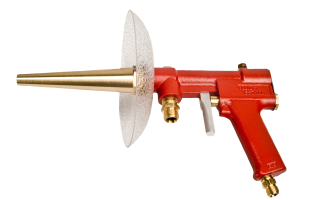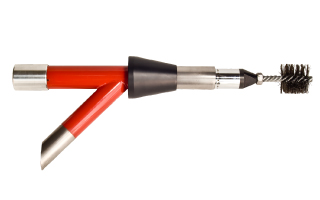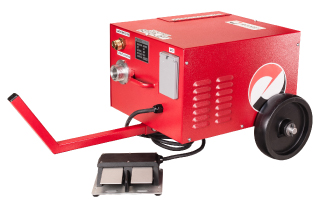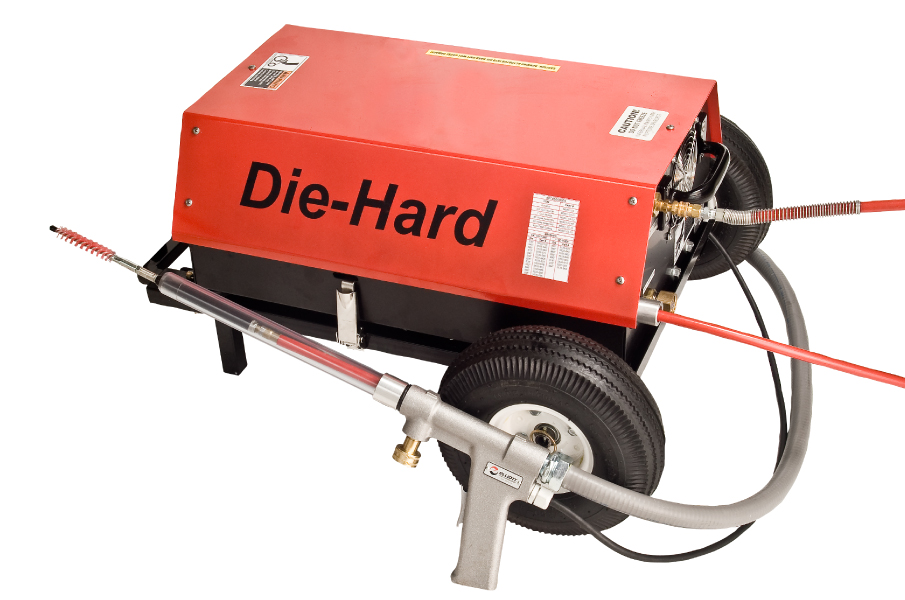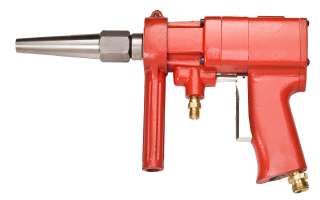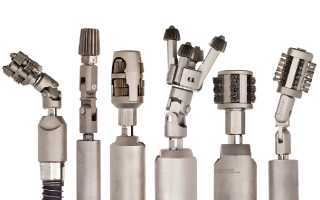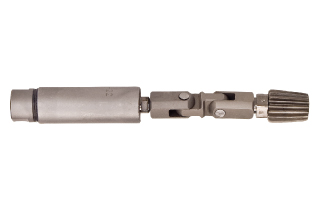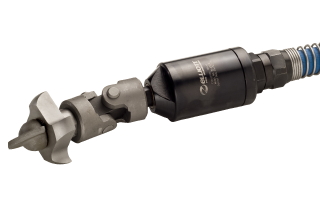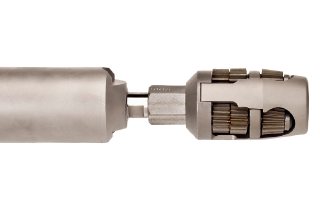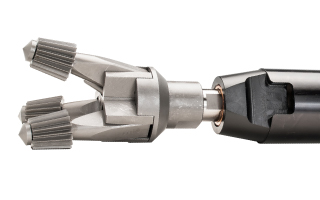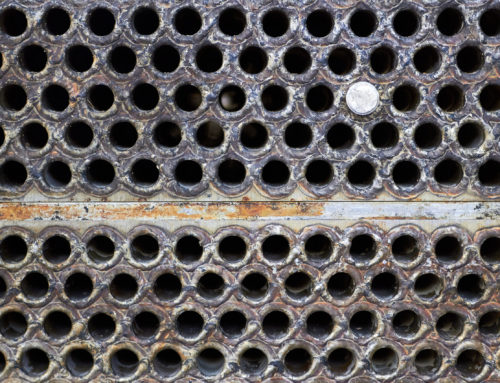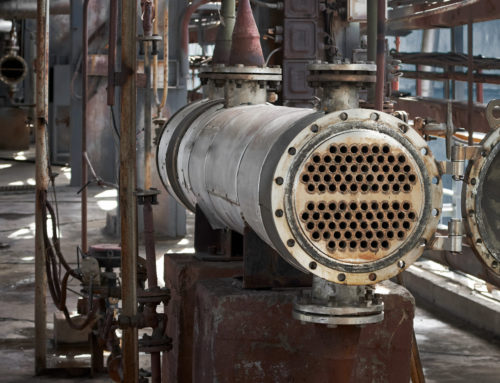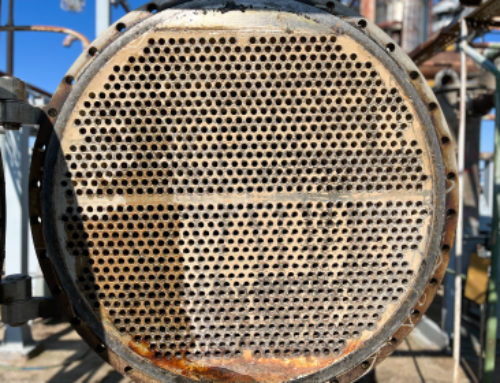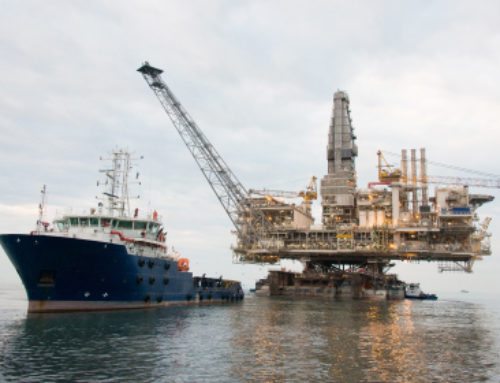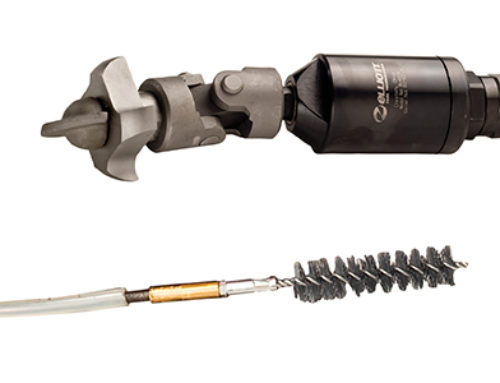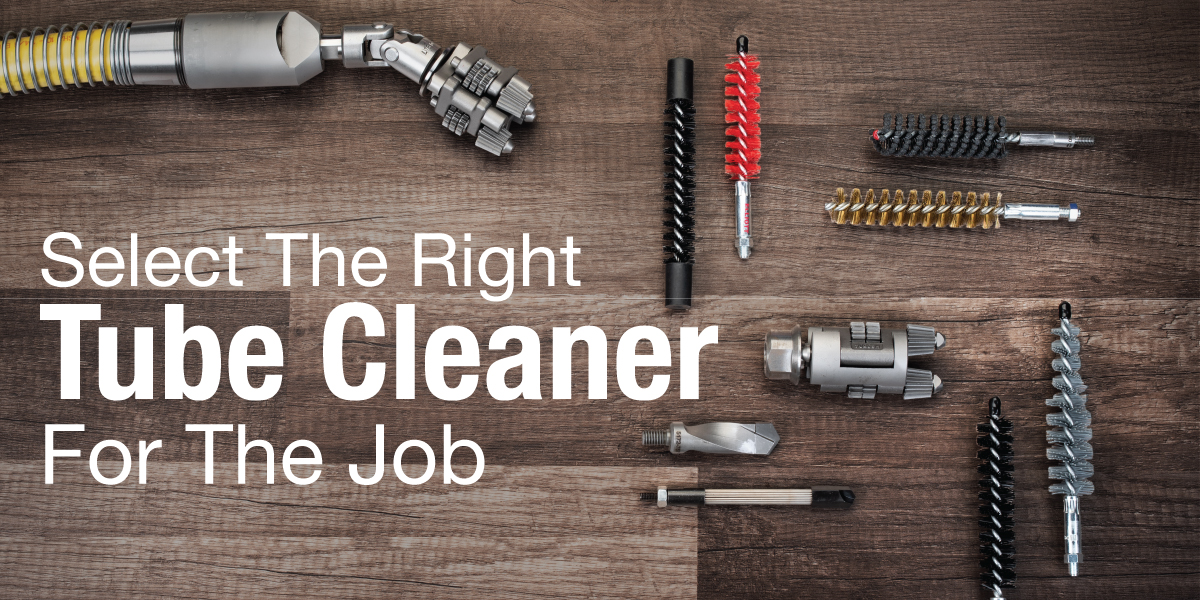
Cleaning tubes increases energy efficiency. Every tubed vessel (ex: boilers, heat exchangers, condensers, chillers, etc.) requires the surface of the tubes to be clean and scale-free to function efficiently. If deposits or scale are present, the flow through the vessel and the efficiency of the vessel decreases. Debris will force the vessel to overcompensate for the decrease in energy production, causing an increase in pump horsepower and flows of fuel. In addition to efficiency loss, some deposits are corrosive in nature and will eventually cause damage to the tube walls. Deposits and scale (silicates, sulphates, sulphites, carbonates, calcium, organic growths, etc.) all have the potential to cause tube wall damage and/or decrease efficiency.
In order to properly maintain heat exchangers and boilers, the right cleaning tools must be selected to clean the tubes. Choosing the correct cleaning tool depends on many different factors:
- Tube Dimensions
- Tube Material
- Tube U-Bend or Curve
- Deposit Type
- Thickness of the Deposit
- Evenness of the Deposit
- & Others
Additionally, there are several styles of cleaning tools and heads ranging from brushes to air-powered motors to cableless cleaners. All of these variables, in addition to the wide range of conditions in which cleaners operate, increases the difficulty of selecting a cleaning tool. No two vessels will have the same type and thickness of deposits to remove. Therefore, each tube cleaning job should be considered and treated individually with its own solution.
Due to the variety of cleaning methods available, a couple issues may occur when cleaning tubes. The first issue may arise if the wrong tool is selected for the job. Similar to no two vessels being alike, no two tube cleaners may work for the same job. This makes it very important to communicate details about the job to find the right tube cleaner, brush, or head. The second issue involves incorrect usage of a product. Each tube cleaning method is different based upon the application. Thus, it is important to be well informed on how to use the tool properly before cleaning.
As a general rule, drills are most often used for cleaning of hard powder, hard deposit, and rock solid deposits. Occasionally, they can also be used for scale or soft deposits of medium or heavy thickness. For lighter deposits or for more organic, soft deposits, other cleaning tools (i.e. brushes or descaling tools) would be more economical and efficient.
In order to make the right decision, make sure you are well informed on your vessel and the equipment you will be using. Refer to the following tables for more information on the different tube cleaners, brushes, and heads available.
Tube Cleaners
Jumbo Jiffy Gun
- Tube Size: 3/8″ – 1-1/4″ (9.5 – 31.8mm) OD
- Tube Section: Straight
- Deposit: Soft, Gummy, Organic
- Thickness: Light to Medium
- Flush: Wet
Soot Buster
- Tube Size: 1-3/4″ – 3″ (44.5 – 76.2mm) OD
- Tube Section: Straight
- Deposit: Soft (Soot)
- Thickness: Light to Medium
- Flush: Dry
Roto-Jet
- Tube Size: 0.312″ – 2″ (7.9 – 50.8mm) ID
- Tube Section: Straight or Curved
- Deposit: Soft, Gummy, Organic
- Thickness: Light to Medium
- Flush: Wet or Dry
Die-Hard™
- Tube Size: 3/4″ & 1″ (19.1 – 25.4mm) OD
- Tube Section: Straight
- Deposit: Soft, Gummy, Organic
- Thickness: Light to Medium
- Flush: Wet
5224XL & 5125 Series
- Tube Size: 3/8″ – 2″ (9.5 – 50.0mm) OD
- Tube Section: Straight
- Deposit: Soft, Gummy, Organic, Hard Powder, Rock Solid
- Thickness: Light to Heavy
- Flush: Wet or Dry
Air Turbine Style Tube Cleaners
- Tube Size: 0.495″ – 13.225″ (12.57 – 335.9mm) ID
- Tube Section: Straight & Curved
- Deposit: Soft, Gummy, Organic, Hard Powder, Rock Solid
- Thickness: Light to Heavy
- Flush: Dry
Gas Line Renewal
- Pipe Size: 0.750″ – 1.500” (19.05 – 38.10mm)
- Tube Section: Straight
- Deposit: Gummy, Organic, & Hard Powder
- Thickness: Light to Medium
- Flush: Dry
Aluminum Siphon Tube Cleaner
- Tube Size: 2.875” – 4.750” (73.0 – 12.65mm) ID
- Tube Section: Curved
- Deposit: Hard Powder, Rock Solid
- Thickness: Heavy
- Flush: Dry
Pipe Rattling Equipment
- Pipe Size: 2.375” – 20.00 (60.30 – 508.00mm) OD
- Tube Section: Straight
- Deposit: Hard Powder, Rock Solid
- Thickness: Medium to Heavy
- Flush: Dry
ET Series
- Pipe Size: 3/4” – 5-7/8″ (19.05 – 149.23mm) OD
- Tube Section: Straight
- Deposit: Hard Powder, Rock Solid
- Thickness: Medium to Heavy
- Flush: Dry

